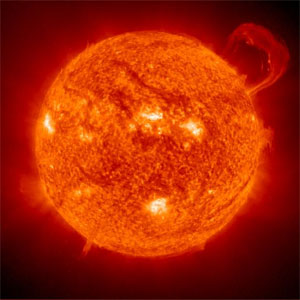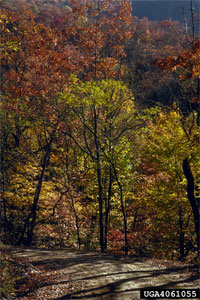|
Climates are a product of the interaction of solar radiation and the atmosphere (Mackenzie 1998).
Solar radiation originates from the sun and provides the light which makes
photosynthesis possible and provides the heat necessary to support life.
It also drives atmospheric movement, evaporation, and
precipitation.

SOHO, ESA / NASA, www.nasa.gov
Only about 30% of the solar radiation which reaches the earth is reflected back into space by the atmosphere, the remaining 70% of the solar radiation is absorbed by the atmosphere, vegetation and the earth’s surface (Barnes et al. 1998).
Solar radiation is selectively absorbed by vegetation to facilitate photosynthesis. However, not all solar radiation is used by plants. Solar radiation can be divided into three types,
ultraviolet, visible and infrared.
Most plants absorb ultraviolet and visible light waves (Gates 1968). This selective nature of vegetation is why many plants look green.

Arnold T. Drooz, USDA Forest Service, www.forestryimages.org
The amount of solar radiation which reaches a given area of the earth’s surface is dependent upon latitude, time of day, altitude, and atmospheric conditions (Barnes et al. 1998).
|
